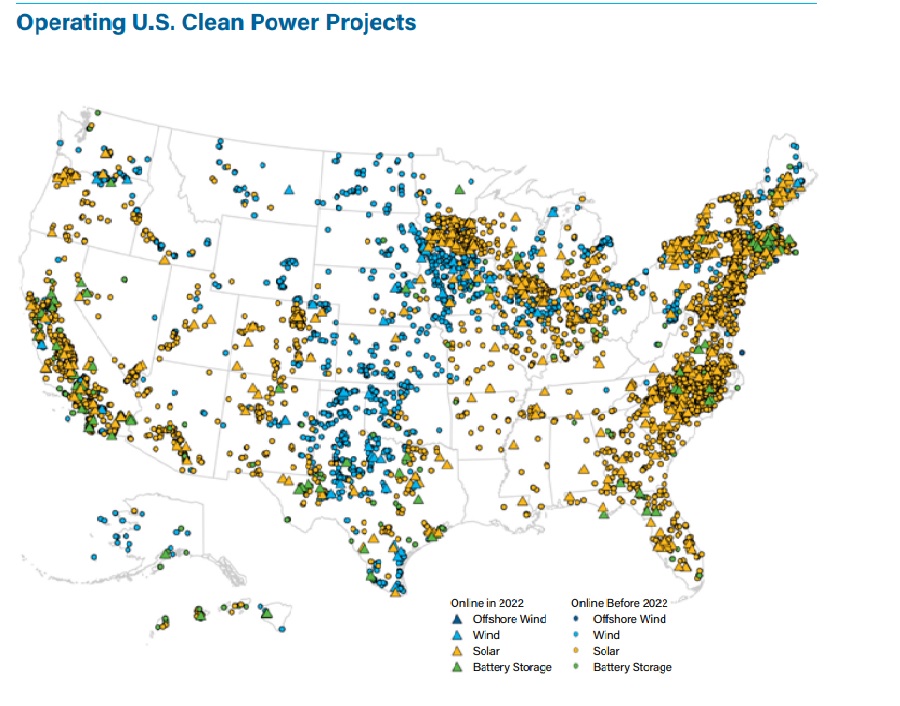
One year on: are US investors banking on the Inflation Reduction Act?
Biden's Inflation Reduction Act has sparked an investment boom in renewable energy in the US. So, one year on, are asset owners capitalising on the opportunity?
The US Inflation Reduction Act (IRA) marks one year today. The bill, which became effective on August 16 of last year, includes a $369 billion budget to be spent on renewable energy, in addition to a flurry of tax credits and grants aimed at cutting US carbon emissions by 40% before the end of this decade.
While the surge in government borrowing has sparked fierce opposition from the Republican party, it has also triggered a sharp rise in private sector investment.
Over the last 12 months, some $271 billion were invested in clean energy projects utility in the US, according to data by the American Clean Power (ACP) association, an industry body for the renewable energy industry.
This surpasses the total spent on clean energy over the 7 years prior to the passage of the IRA.
The sharp increase in government spending has left its mark on US energy infrastructure. With more than 80 new energy facilities being built, the ACP predicts a ninefold increase in solar module production and a more than fifteenfold increase in grid-scale battery storage.
Similarly, the EIA, the US Energy Information Administration, which publishes data on conventional and renewable energy, predicts that as a result of IRA funding, by 2050, wind and solar energy will account for more than half of all electricity generation in the US.
Battery belt
While wind-and solar energy investments have scaled up dramatically in the US, their geographic impact is dispersed, with some traditional Republican states emerging as the strongest beneficiaries of the reforms.
While the wind energy production appears to be concentrated in the mid-West, the South is witnessing a flurry of new investments in electric vehicle batteries, which has led to the emergence of a new “battery” belt, spanning from Michigan, Ohio and Georgia over to the Carolinas.
Indeed, since the launch of the Act, Republican-governed states have secured around 80% of investment in renewable energy and battery capacity, according to research by the Financial Times.
This also transpires in the latest ACP report, which showcases a flurry of new projects in the region.

Some key investors over the last year were the Taiwan Semiconductor Manufacturing Company which plans to spend $28 billion on a chip plant in Arizona and Intel, which has invested $30 billion in the same state.
But the push to invest more in renewable energy hasn’t been plain sailing as cumulative clean power capacity slumped for the first time since 2017, largely due to challenges in sourcing solar panels, supply chain constraints, interconnection issues, and policy uncertainty the ACP said.
Institutional cash
While there has been a dramatic acceleration of the transition to renewable energy, there has not yet been a comparable take-up in demand from institutional investors.
Some barriers to large-scale institutional investment in renewables were the lack of a clear project pipeline and challenges to find suitable ticket sizes, with the largest US pension funds typically looking for investments worth several hundreds of millions.
However, the new manufacturing production credits which are part of the IRA could potentially open up scale for larger investments according to the Climate Policy Initiative.
Another potential obstacle is a reduction in risk appetite due to the rise in interest rates, with some institutional investors scaling back their private equity allocations.
Having said that, CalPERS, the largest pension fund in the US has increased its investments in climate energy solutions, with some $16.5 billion invested in listed equities alone as of May 2023, compared to $12 billion in 2022.
It is yet to confirm its targets in the infrastructure space but has invested a total of $40 in climate solutions, the fund stated.
Another example is Los Angeles County Employees Retirement Association (LACERA), which said it plans to scale up its investments in renewable energy. The $73 billion fund holds 5% of its portfolio in infrastructure and 3% to natural resources.
A key question going forward will be whether funds in traditional red states will now jump on the bandwagon and invest in renewable energy infrastructure.
Also read
High inflation and rising costs increasingly a ‘disaster’ for clean energy investors in UK




